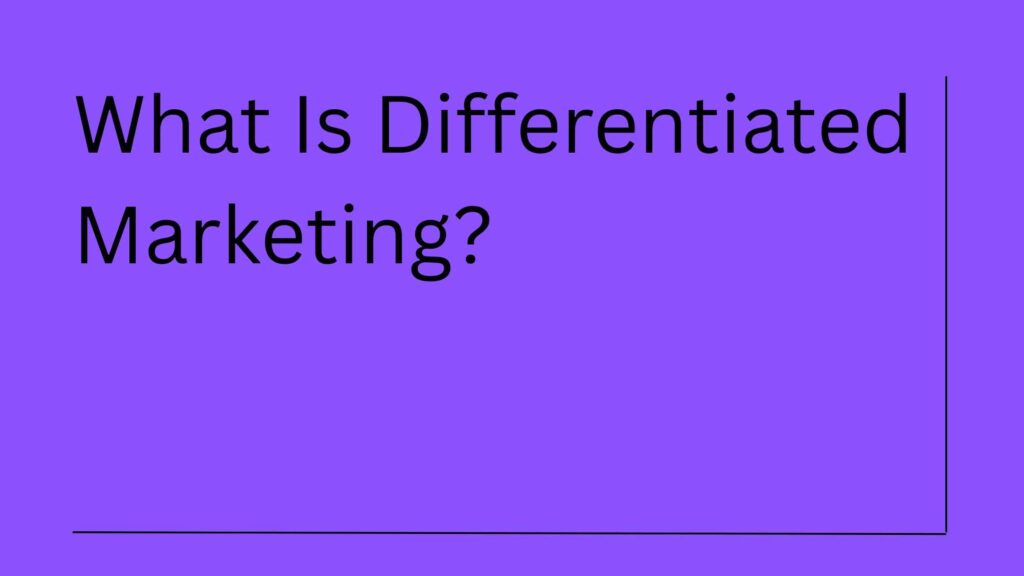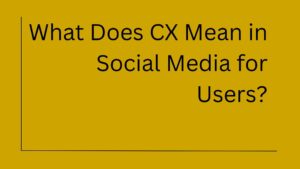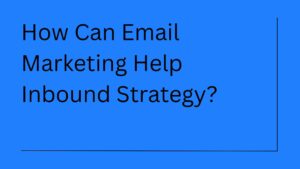Most successful businesses eventually realize that not all customers are the same. Different people have different needs, preferences, and reasons for buying products.
Differentiated marketing recognizes this reality and embraces it as a strategic advantage.
Instead of creating one generic message for everyone, you develop specific marketing approaches for distinct customer segments. Each segment gets messaging, products, and experiences tailored to their particular needs and characteristics.
This sounds more complicated than mass marketing, and it is. But for most businesses today, the results justify the additional effort and complexity.
The companies dominating their industries rarely treat all customers the same. They’ve identified meaningful differences between customer groups and created strategies to serve each one effectively. Understanding how differentiated marketing does this can transform your own marketing approach.
What Exactly Is Differentiated Marketing?
Differentiated marketing means dividing your total market into distinct segments and creating separate marketing strategies for each one.
You’re recognizing that your market isn’t one homogeneous group. It’s made up of different types of people with varying needs, preferences, budgets, and behaviors. Each segment deserves its own approach.
This might mean offering different product variations for other segments. Or it could mean selling the same product but marketing it differently to various groups. Sometimes it involves both different products with different marketing for each segment.
The key is that you’re consciously choosing to serve multiple segments in ways specifically designed for each one rather than hoping a single approach works for everyone.
How Differentiated Marketing Actually Works?
The process starts with market segmentation, dividing your total market into meaningful groups based on characteristics like demographics, behavior, needs, or preferences.
Common ways to segment markets include:
- Age groups
- Income levels
- Geographic locations
- Lifestyle preferences
- Usage patterns
- Values and priorities
Once you’ve identified your segments, you develop specific strategies for each one. This includes determining which products or services to offer each segment, how to price them, where to sell them, and how to communicate with each group.
A hotel chain might segment its market into business travelers, families, and luxury seekers. Each segment gets different room options, pricing structures, amenities, and marketing messages designed specifically for their needs and preferences.
The business traveler segment might see ads emphasizing convenient locations, fast wifi, and efficient check-in. Family segments see messages about spacious rooms, kid-friendly amenities, and value pricing. Luxury seekers hear about premium services, exclusive experiences, and sophisticated atmospheres.
Same hotel chain, completely different marketing approaches for different segments.
Real Examples of Differentiated Marketing
Seeing how major brands implement differentiated marketing makes the concept much clearer.
Nike
Nike is a masterclass in differentiated marketing. They don’t just sell athletic shoes; they sell different shoes marketed completely differently to various segments.
Serious runners get performance-focused marketing emphasizing technical features, cushioning systems, and competitive advantages. Casual sneaker buyers see lifestyle marketing focused on style, comfort, and fashion.
Basketball players see endorsements from NBA stars and messaging about court performance. Yoga enthusiasts see completely different products and marketing emphasizing flexibility and mindful movement.
Nike segments by sport, by performance level, by style preference, and more. Each segment feels like Nike understands exactly what they need.
Toyota
The automotive industry relies heavily on differentiated marketing because car buyers have vastly different needs and preferences.
Toyota offers economy cars like the Corolla, marketed to budget-conscious buyers, emphasizing reliability and fuel efficiency. Their luxury Lexus brand targets affluent buyers with messaging about prestige, comfort, and advanced technology.
The Prius appeals to environmentally conscious consumers. The Tacoma targets outdoor enthusiasts and people who need rugged utility. The Sienna minivan markets to families needing space and safety.
Same company, completely different products and marketing approaches for different customer segments.
Apple
Apple segments its product lines and marketing very deliberately. The iPhone has multiple models at different price points targeting different segments.
The iPhone Pro models target professionals and tech enthusiasts with marketing emphasizing advanced camera systems, processing power, and premium features. Standard iPhone models appeal to mainstream consumers wanting quality without the highest price tag.
The iPhone SE targets budget-conscious buyers or people who prefer smaller phones. Each model has distinct marketing highlighting the features most relevant to its target segment.
Apple also segments by use case marketing differently to creative professionals, business users, students, and general consumers.
Marriott Hotels
Marriott operates over 30 different hotel brands, each targeting specific market segments.
The Ritz-Carlton serves luxury travelers. Courtyard by Marriott targets business travelers. Residence Inn appeals to extended-stay guests. Fairfield Inn serves budget-conscious travelers.
Each brand has its own positioning, pricing, amenities, and marketing approach designed specifically for its target segment. This allows Marriott to capture customers across the entire market without forcing everyone into one experience.
Major Benefits Aka Advantages of Differentiated Marketing
Why go through the complexity of creating multiple marketing approaches instead of keeping things simple with one strategy for everyone?
Better Customer Satisfaction
When your marketing speaks directly to someone’s specific needs and preferences, it resonates more strongly. People feel understood rather than treated as just another generic customer.
This leads to higher satisfaction, stronger brand loyalty, and better customer retention.
Higher Conversion Rates
Targeted messaging converts better than generic messaging. When your marketing addresses the specific concerns, desires, and objections of a particular segment, more people respond positively.
A message crafted specifically for budget-conscious buyers will convert them more effectively than a generic message trying to appeal to everyone.
Premium Pricing Opportunities
When you serve specific segments exceptionally well, you can often charge higher prices. People pay more for products and experiences that feel tailored to their needs.
Generic mass market products compete primarily on price. Differentiated offerings can compete on value and fit instead.
Competitive Advantages
Competitors using undifferentiated approaches can’t serve specific segments as effectively as you can with targeted strategies. This gives you defendable positions in valuable niches.
Even if competitors try to copy your differentiated approach, they’ll struggle to serve all segments equally well.
Market Coverage
By serving multiple segments with appropriate strategies for each, you can capture a larger total market share than focusing on just one segment or using a generic approach.
You’re not leaving valuable customer groups underserved.
The Challenges and Cons
Differentiated marketing isn’t without significant challenges. You need to understand what you’re getting into.
Higher Costs
Creating multiple marketing campaigns costs more than creating one. You need different creative executions, separate media strategies, and potentially different sales approaches for each segment.
Product development costs increase too if you’re creating different versions for different segments.
Increased Complexity
Managing multiple segment strategies is significantly more complex than managing one approach. Your team needs to coordinate different campaigns, track results separately, and maintain consistency while still differentiating.
This complexity can slow decision-making and increase the chance of execution mistakes.
Resource Requirements
You need sufficient resources, people, budget, and time to execute differentiated marketing effectively. Spreading resources too thin across too many segments can result in mediocre execution everywhere.
Small businesses sometimes struggle with this. They want to serve multiple segments but lack the resources to do it well.
Dilution Risk
There’s a risk that serving too many segments with different approaches could dilute your brand identity. Customers might become confused about what your brand actually stands for.
Maintaining a coherent brand while differentiating for segments requires careful strategy.
Cannibalization
Sometimes different products or campaigns targeting different segments can cannibalize each other. A customer who would have bought your premium offering might choose your budget option instead.
You need to position segments carefully to minimize this risk.
How to Implement Differentiated Marketing?
If you’re convinced differentiated marketing makes sense for your business, here’s how to approach implementation.
Start with Research
You can’t segment effectively without understanding your market. Conduct research to identify meaningful differences between customer groups.
Look at demographics, behaviors, needs, preferences, and any other characteristics that might influence how people respond to your marketing.
Survey existing customers. Analyze purchasing data. Study competitors and how they segment the market.
Identify Priority Segments
You probably can’t serve every possible segment right away, especially if you’re just starting with differentiated marketing.
Identify the most attractive segments based on size, growth potential, profitability, and fit with your capabilities. Start with two or three segments before expanding further.
Develop Segment Strategies
For each priority segment, develop a complete strategy covering product, pricing, distribution, and promotion.
What specific needs does this segment have?
What features matter most to them?
How price-sensitive are they?
Where do they shop?
What messages resonate with them?
Your strategies should feel distinctly different for each segment while maintaining overall brand consistency.
Create Targeted Content and Campaigns
Develop marketing materials specifically for each segment. This might mean different ad campaigns, website experiences, email practices, or social media strategies.
The messaging, tone, imagery, and offers should reflect each segment’s specific characteristics and preferences.
Test and Refine
Start with your best hypotheses about what will work for each segment, but be ready to adjust based on results.
Track performance separately for each segment. Which approaches are working? Where are you missing the mark? Use this data to continuously improve your segment strategies.
Maintain Brand Consistency
While differentiating for segments, maintain core brand elements that create consistency. Your fundamental brand values, personality, and promise should remain recognizable across all segments.
Think of it like family members have individual personalities but share common traits.
When Does Differentiated Marketing Make Most Sense?
Differentiated marketing isn’t right for every business or situation. It works best under specific conditions.
Diverse Customer Base
If your potential customers have significantly different needs, preferences, or behaviors, differentiated marketing usually outperforms undifferentiated approaches.
The more diverse your market, the more value segmentation creates.
Competitive Markets
In crowded markets, differentiated marketing helps you stand out by serving specific segments better than competitors using generic approaches.
You can win segments even if you can’t dominate the entire market.
Multiple Use Cases
If your product serves different purposes for different people, differentiated marketing allows you to highlight relevant benefits for each use case.
A smartphone serves different needs for business professionals versus casual users versus photography enthusiasts.
Sufficient Resources
You need adequate resources to execute differentiated marketing well. If you’re resource-constrained, focusing on one or two segments might work better than spreading yourself too thin.
Premium Positioning
If you want to command premium prices, differentiated marketing helps you serve specific segments so well that they’ll pay more for the tailored fit.
Differentiated vs. Concentrated Marketing
It’s worth noting the difference between differentiated marketing and concentrated marketing.
Differentiated marketing serves multiple segments with different strategies for each. Concentrated marketing focuses all resources on serving one specific segment exceptionally well.
Concentrated marketing makes sense when you’re smaller, when one segment is particularly attractive, or when you need to establish a strong position before expanding.
Differentiated marketing works better when you have resources to serve multiple segments and when capturing a larger total market matters more than dominating one niche.
Many successful businesses start with concentrated marketing to establish themselves in one segment, then expand to differentiated marketing as they grow.
Conclusion: Making Differentiated Marketing Work for You
The most important thing to understand about differentiated marketing is that it’s not about making things complicated for the sake of complexity.
It’s about recognizing real differences between customer groups and serving them appropriately. When done well, it feels natural to both you and your customers.
Start by really understanding who your customers are and what they need. Look for meaningful patterns and differences. Test whether segment-specific approaches perform better than generic ones.
You don’t need to implement perfectly differentiated marketing all at once. Start with the most obvious and important segments. Build from there as you learn what works.
The businesses that win in competitive markets rarely do so by treating all customers the same. They find ways to make each customer segment feel understood and well-served.
Differentiated marketing is how they do it.
FAQs About Differentiated Marketing
While both strategies focus on targeting specific groups, differentiated marketing appeals to multiple customer segments with different campaigns. Niche marketing, on the other hand, concentrates efforts on one highly specific audience with tailored messaging.
Companies offering a range of products or services like consumer goods brands, tech companies, or retail chains often benefit the most. This strategy allows them to adapt messaging for diverse audiences without diluting their overall brand presence.
Yes, generally it is. Since businesses must create separate campaigns for each audience segment, costs can increase for content creation, advertising, and market research. However, the higher ROI from more precise targeting often offsets the added expense.
Absolutely. Even with limited budgets, small businesses can segment their audience and personalize offers. For example, a local bakery might run one campaign for health-conscious customers (promoting whole-grain options) and another for families (highlighting bulk deals).
The most common challenges include balancing multiple campaigns at once, ensuring consistent brand messaging across segments, and avoiding customer confusion. It also requires strong market research to prevent wasting resources on the wrong audience groups.
Modern tools like CRM systems, marketing automation, and AI-driven analytics make segmentation and personalization much easier. Businesses can track customer behaviors in real time and deliver tailored campaigns at scale without as much manual effort.






2 thoughts on “What Is Differentiated Marketing? Definition and Real Examples”
Hey Haribabu,
It’s great news, maybe. I’d most certainly donate to this outstanding blog! I suppose for now I’ll settle for bookmarking and adding your RSS feed to my Google account. I look forward to fresh updates and will talk about this marketing blog. See you soon, Haribabu!
That’s a great point about strategic marketing games. It’s not just luck! Market segmentation matters a lot if one wants to target each group differently. That’s why I’m pressing differentiated marketing this much. Sounds like a great effort bringing the topic in detail, thanks.